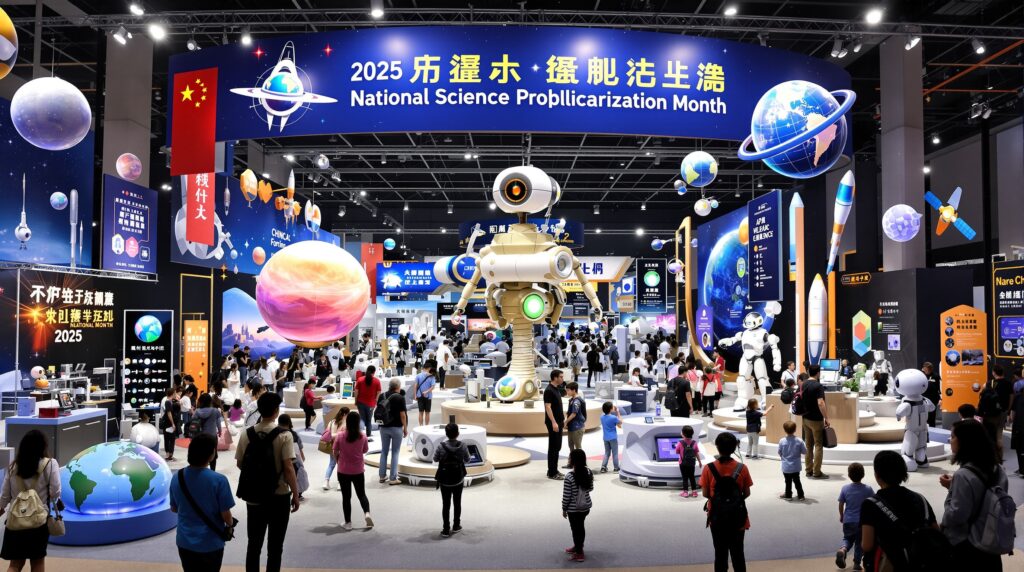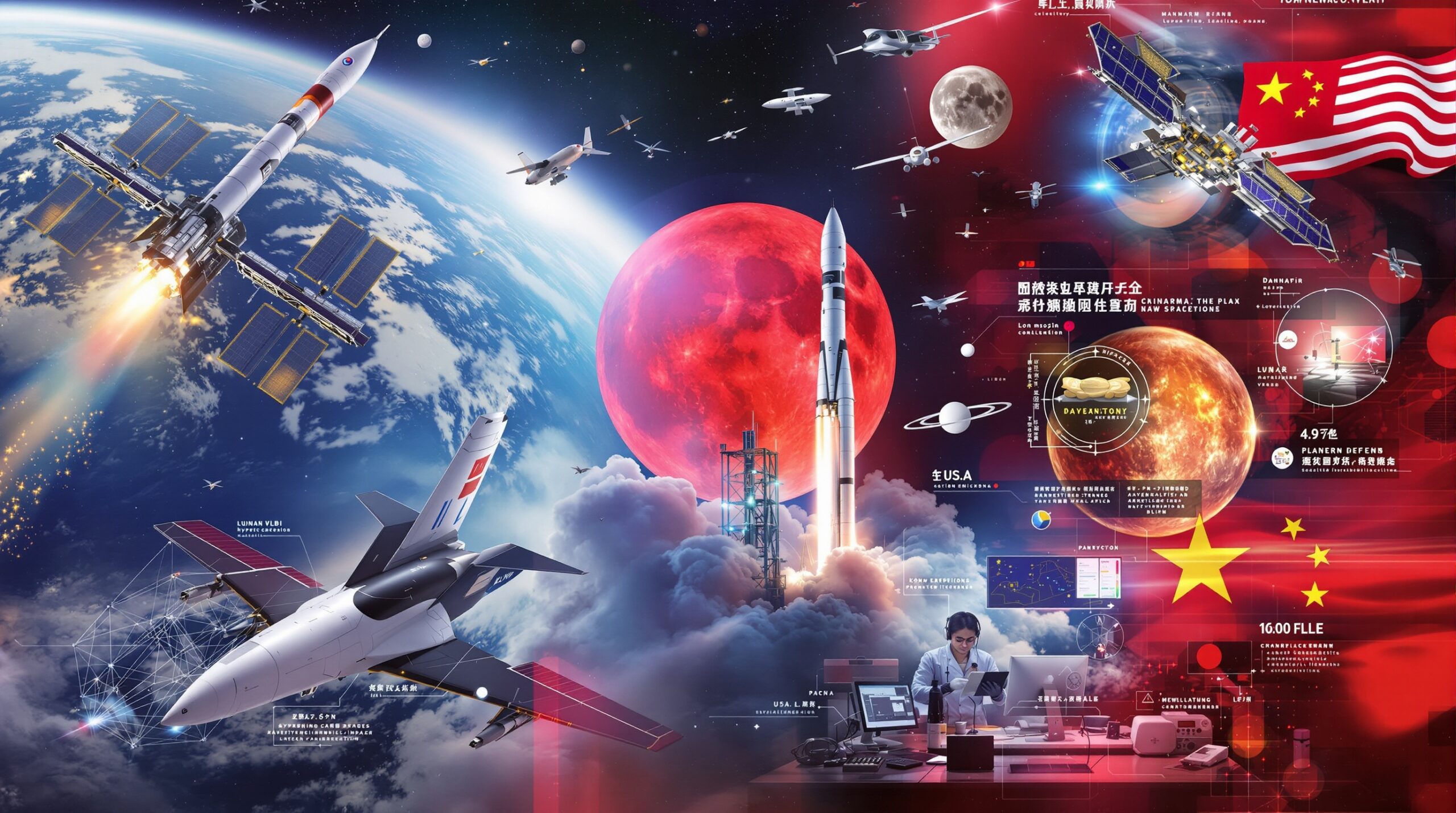Top 10 Highlights from China’s Science and Space News: September 1-7, 2025
Highlights from China’s Science and Space News
In the fast-paced world of global innovation, China continues to make bold strides in science and space exploration. This weekly roundup captures the most significant developments from September 1 to 7, 2025, showcasing China’s advancements that captivate audiences in the USA and beyond. From groundbreaking launches to ambitious future missions, these stories highlight China’s growing influence in the space race and scientific research. Whether you’re a tech enthusiast, policy watcher, or space geek, dive into these key events that underscore China’s commitment to pushing boundaries.

1. China Launches National Science Popularization Month with Nationwide Events
China kicks off its inaugural National Science Popularization Month on September 1, igniting a 30-day celebration of scientific knowledge across the country. Authorities organize interactive exhibits, lectures, and workshops to engage millions, focusing on topics like space exploration and AI. This initiative stems from the revised Science and Technology Popularization Law effective since December 2024, aiming to boost public interest in STEM fields. Organizers expect over 100 million participants, fostering a new generation of innovators. For more details on the events, visit the official Xinhua report. This move strengthens China’s position as a leader in science education, directly competing with U.S. programs like National Science Week.

2. Tiangong Space Station Sets New Record in Materials Research
Astronauts aboard China’s Tiangong Space Station achieve a breakthrough on September 1 by surpassing the highest temperatures recorded in space-based materials research, outpacing the International Space Station (ISS). The crew conducts experiments on high-temperature alloys and advanced composites, reaching extremes that enable innovations in aerospace engineering. This feat demonstrates Tiangong’s superior capabilities in microgravity research, with potential applications in U.S.-relevant industries like aviation and defense. The Star reports on how this positions China ahead in the “heated space research race.” Experts note that such advancements could accelerate developments in hypersonic vehicles, a key area of U.S.-China competition.

3. Military Parade Showcases Advanced Hypersonic Missiles and Drones
China unveils cutting-edge hypersonic missiles, ICBMs, and drones during a grand military parade on September 3, emphasizing its technological prowess in space-related defense systems. The event features the JingLei-1 air-based long-range missile and JuLang-3 submarine-launched ICBM, part of the nuclear triad. Spectators witness drones capable of space-adjacent operations, highlighting integrations with satellite networks. This display, covered by Space.com, signals China’s rapid progress in precision warfare, raising eyebrows in U.S. defense circles. Analysts link these to broader space ambitions, including anti-satellite technologies that could impact global security.

4. Researchers Develop Advanced Deep-Space Communication Tech
Chinese scientists introduce new signal algorithms on September 3, enabling precise tracking of probes over 180 million kilometers away. This innovation, detailed by IEEE Spectrum, enhances contact with deep-space missions like those to Mars and beyond. The tech uses AI-driven codes to minimize signal loss, supporting upcoming ventures such as the Tianwen series. For U.S. audiences, this mirrors NASA’s Deep Space Network but with potential efficiency gains, potentially aiding joint international efforts or heightening competition in solar system exploration.
5. Successful Launch of Shiyan 29 Satellite for Space Environment Detection
China propels the Shiyan 29 satellite into geosynchronous orbit on September 5 via a Long March 3C rocket from Xichang. This classified mission focuses on space environment detection, gathering data on radiation and debris to safeguard future satellites. Space Intelligence reports the launch as the 195th orbital attempt of 2025, underscoring China’s prolific launch cadence. Collaborations with institutions like Northwestern Polytechnical University (NPU) and the Chinese Academy of Sciences (CAS) drive this effort, offering insights that could benefit U.S. space weather forecasting models.
6. Galactic Energy’s Ceres-1 Rocket Deploys Multiple Satellites
Galactic Energy achieves another milestone on September 5 with the Ceres-1 rocket launching from Jiuquan, deploying the Kaiyun-1, Yuxing-3 08, and Yunyao-1 27 satellites into sun-synchronous low Earth orbit. These satellites support meteorology and communications, expanding China’s commercial space sector. As noted by Space Intelligence, this marks the 196th launch of the year, reflecting the private sector’s growth. With ambitions for constellations like Yunyao, this rivals U.S. companies like SpaceX, promising affordable data services globally.
7. World’s First Lunar Orbital VLBI System Demonstrated
Scientists from China announce on September 4 the successful construction of the Lunar Orbital Very Long Baseline Interferometry (VLBI) system, LOVEX, integrated into the Chang’e-7 mission. This ultra-long baseline setup detects signals from quasars and the Chang’e-6 module, enabling high-resolution radio astronomy. China Science highlights its 380,000-kilometer reach, revolutionizing spacecraft tracking. This technology could enhance U.S.-China collaborations in deep-space observations, similar to NASA’s Very Long Baseline Array.
8. Commercial Space Industry Gears Up for Major Expansion in 2025
Reports on September 5 indicate China’s commercial space sector is set for takeoff, with 51,300 satellites registered and mega-constellations like Qianfan (15,000 by 2030) and GW (12,992) in progress. TMTPOST details how companies like LandSpace’s Honghu plan 10,000 satellites, boosting the space economy. This mirrors U.S. Starlink efforts, potentially offering competitive internet services to American users in remote areas.
9. Long March 6A Launches Guowang Group 11 Satellites
China deploys another batch of Guowang (SatNet) communication satellites on September 6 using the Long March 6A from Taiyuan, advancing its internet mega-constellation. Space Intelligence confirms this as the 198th launch of 2025, with satellites entering low Earth orbit to rival Starlink. This step accelerates China’s broadband ambitions, posing challenges and opportunities for U.S. telecom giants.
10. Announcement of First Planetary Defense Test Mission
China reveals plans on September 6 to launch its inaugural planetary defense test mission later in 2025, involving a kinetic impact on a near-Earth asteroid. Xixi reports this will verify deflection techniques, establishing a “Planetary Defense Unit.” Drawing parallels to NASA’s DART mission, this initiative addresses global asteroid threats, inviting potential U.S. partnerships for shared planetary protection.
These highlights from September 1-7, 2025, illustrate China’s dynamic progress in science and space, blending government-led missions with commercial innovations. As the U.S. watches closely—evidenced by Pentagon reports on China’s AI-driven precision warfare—this week’s events reinforce the need for international cooperation amid competition. Stay tuned for next week’s updates, and explore external resources like SpaceNews for deeper dives into ongoing missions.\



